Is outdoor furniture weatherproof? Here’s the expert advice
Is outdoor furniture weatherproof? What’s the most durable outdoor furniture and what’s the best garden furniture to leave outside? We've found the answers...
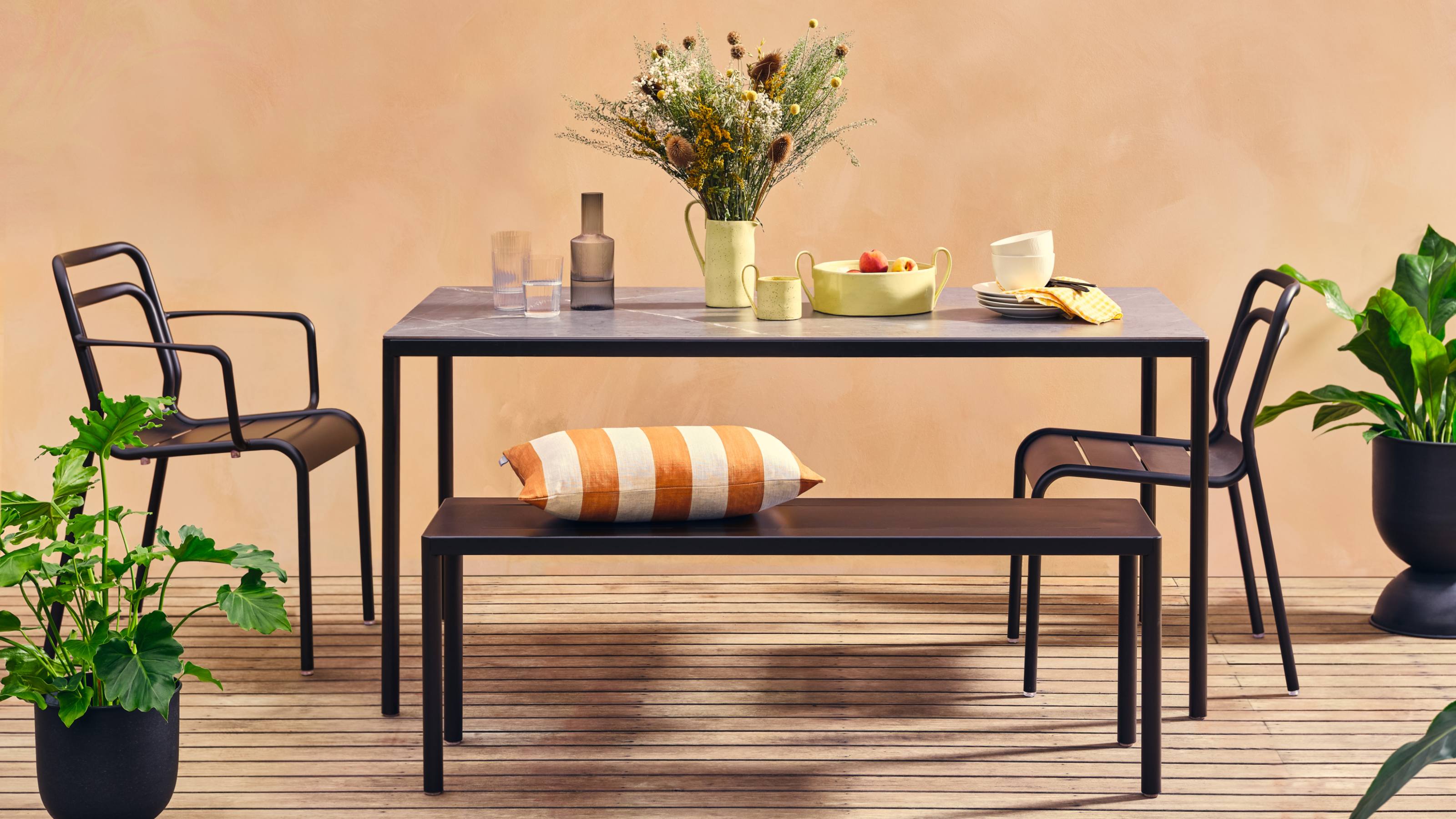

If you’ve found yourself asking ‘is outdoor furniture weatherproof?’ or pondering ‘what is the most durable outdoor furniture to leave outside?’ whilst browsing for garden furniture this year, then you’re not alone.
Patio furniture is the perfect way to make the most of your outside space during the summer season, allowing you to relax, entertain and enjoy the best of the good weather. However, if you've recently thought about buying a new outdoor dining table and chairs, or considered splashing some cash on a garden sofa or lounge set, then you'll be well aware that outdoor furniture doesn't come cheap, and having spent a good deal of time and money on finding the best garden furniture for your outside space, the last thing you want is for it to start rusting or rotting by the end of the season.
Most manufacturers will recommend you store garden furniture under cover during the worst of the winter weather, but with a bulky corner sofa or large outdoor dining table - and possibly limited storage space - that’s not always possible, and definitely not for every passing shower.
So is outdoor furniture waterproof enough to leave it outdoors in the rain? And what's the most durable outdoor furniture you can buy to make good your chances of using it for many years to come? We asked some top garden furniture experts for their advice...
Is outdoor furniture weatherproof?
The degree to which outdoor furniture is weather or waterproof depends a great deal on the materials used in its manufacture.
As Jennifer Newman, founder and designer of award-winning outdoor furniture that has been used in restaurants and public spaces across the UK for the past ten years, explains:
'Outdoor furniture does not need to be waterproof, like a roof, but it does need to keep water from being absorbed into the surfaces. The durability of outside furniture depends on having a base material that will withstand the elements or surface protection that will shield a more vulnerable material.'
Jennifer Newman
The most common materials used for garden furniture are wood, metal and plastic, all of which have different base structures, and different means of increasing that base materials resistance to the weather.
Although it can be easy to get inspired by beautiful garden furniture ideas, it's also well worth understanding the unique pros and cons of the main outdoor furniture materials before deciding which to invest in, so below we've broken down the key factors to bear in mind when considering which material is right for your outdoor space.
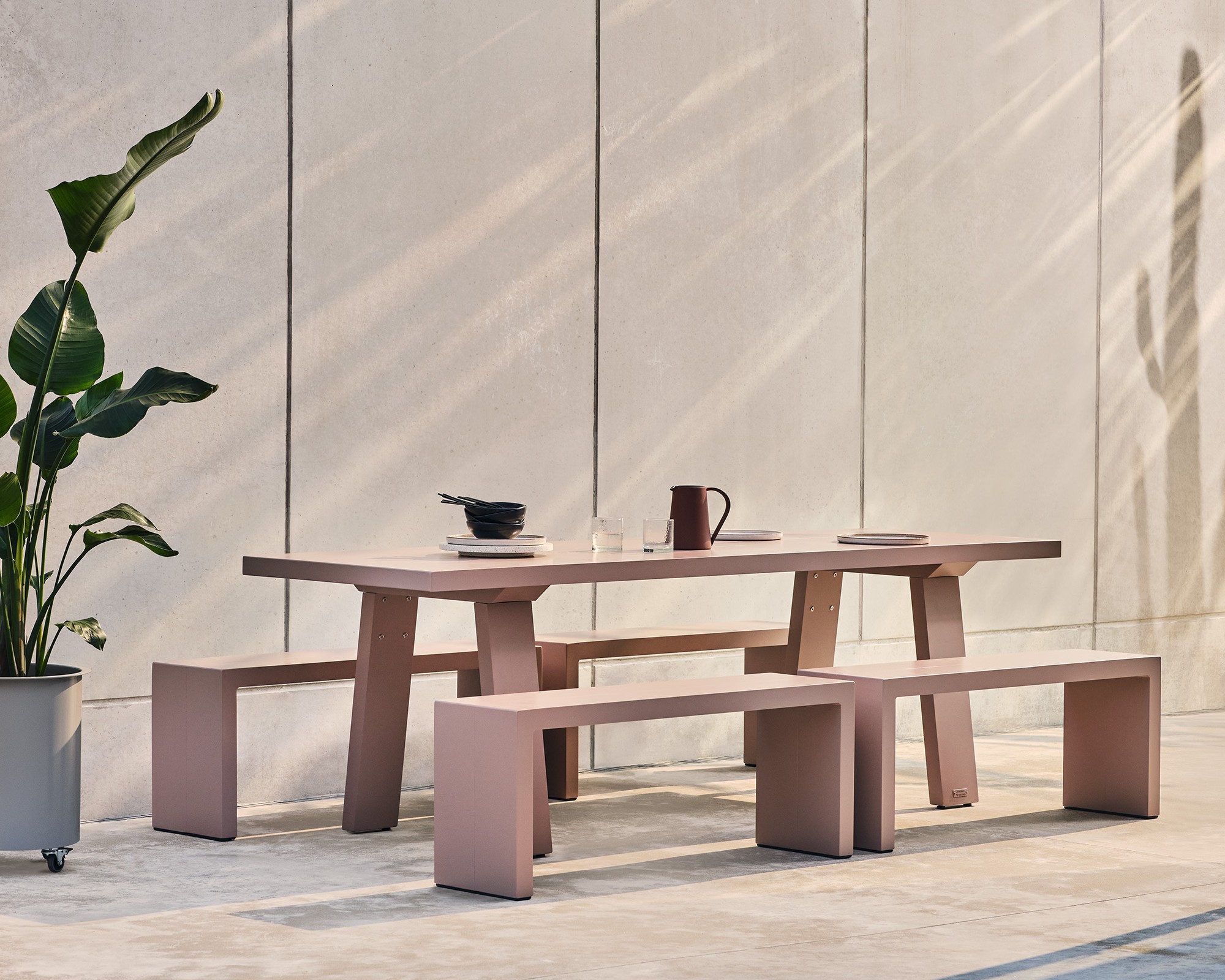
The Trestle aluminium outdoor dining collection from Jennifer Newman
Wood: can you leave wooden garden furniture outside?
You'll find wooden garden furniture made from many types of timber, but when shopping for the most durable wooden outdoor furniture it's hardwoods that you'll want to look out for.
As opposed to fast-growing softwoods, which tend to be better for indoor use, hardwoods come from much slower-growing trees. The wood, therefore, has a denser structure which makes it more difficult for moisture or frost to penetrate the wood grain and makes it particularly useful for making hardwearing outdoor furniture, as it reduces the likelihood of weather damage.
Certain hardwoods also have other qualities that make them particularly apt for outside use, as Heal's Furniture Buyer Hannah Armstrong explains:
'When shopping for outdoor furniture, choose hardwoods with a high oil content, as these are water and rot-resistant, as well as being incredibly strong.'
Hannah Armstrong, Heal's
Teak is one of the hardwoods particularly prized for its ability to make strong, durable, and aesthetically pleasing outdoor furniture. As well as having extremely dense and strong wood, this very slow-growing tree retains high amounts of natural oils in its timber once the tree is cut, which helps to prevent the wood from splitting or cracking in the sun and provides robust natural water resistance.
Teak wood will weather to a silver-grey finish over time which can add a beautiful tone to garden furniture, but, to ensure its longevity for years and even decades to come, you can top up its natural oils with teak oil or wood preservative to maintain the woods golden colour and boost its natural protection from the elements.
However, because of its extremely slow-growing habit, teak can be both expensive to buy and in danger of being harvested unsustainably. Reclaimed teak wood can be a cost-effective and eco-friendly solution, or make sure to look for FSC-certification which should ensure the tree has been felled within a managed forest and will not have contributed to damaging deforestation.
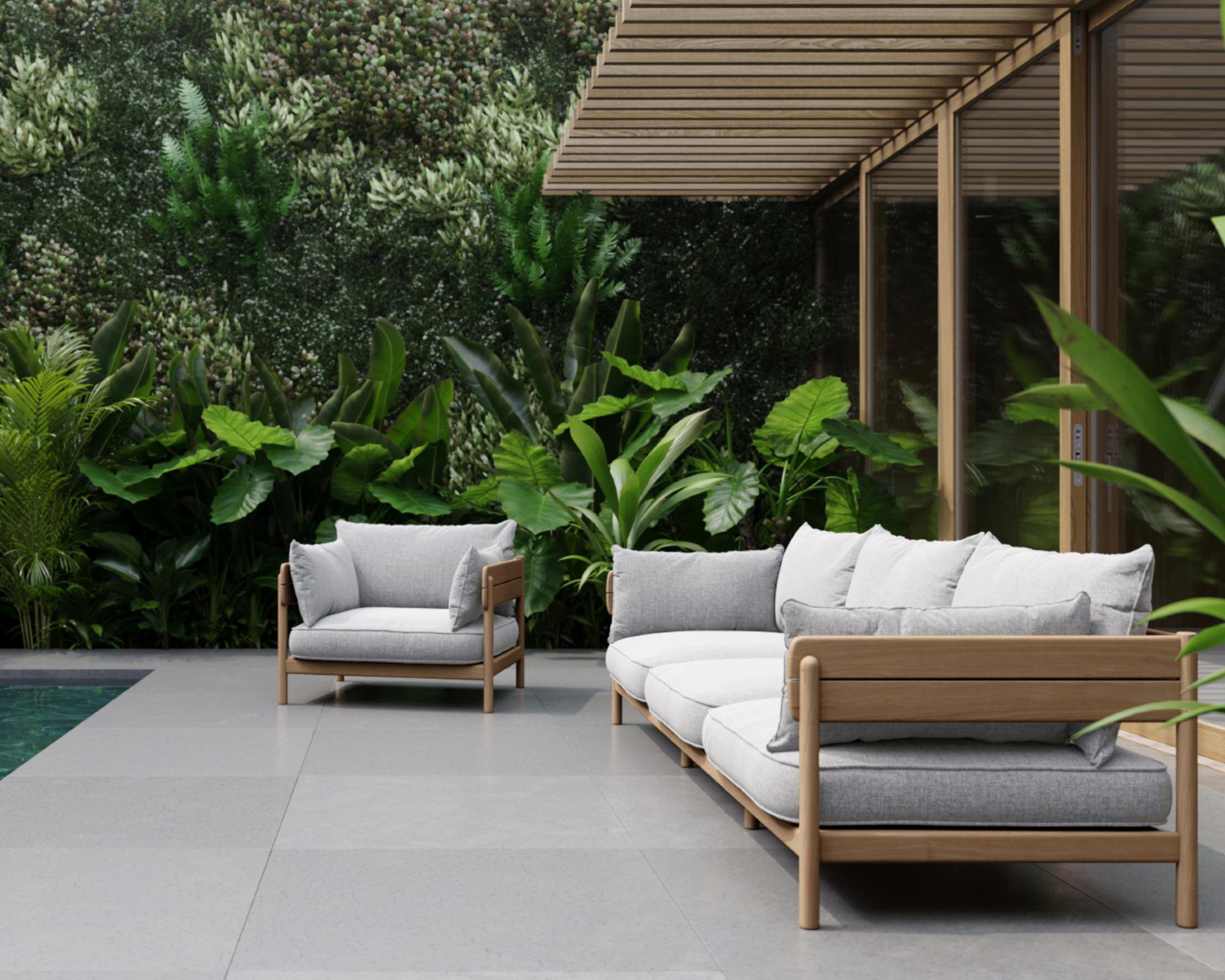
Heal's Tanso outdoor collection crafted from Grade A teak wood. A-grade teak is the highest quality timber that is taken from the very centre of a fully mature tree and therefore has the fewest knots and highest oil content
Cheaper and faster-growing alternatives that are now becoming very popular outdoor furniture choices are the hardwoods acacia and eucalyptus. These woods may be slightly less dense than teak but they are far-quicker growing, allowing them to be grown and managed to yield greater quantities of wood more sustainably - although again, it's important to look for FSC accreditation.
A little low-maintenance upkeep with a coat of wood preservative each year should ensure these hardwoods retain plenty of weather resistance.
For some great timber furniture options make sure to have a browse of our guide to the best wooden garden furniture, plus you can find our top tips for how to clean wooden garden furniture to ensure it stays in good condition year after year.
Metal: what is the best metal for outdoor furniture?
The three main types of metal used for outdoor furniture are steel, iron and aluminium.
Metals are tough and can be cast into a huge range of shapes and sizes, which makes them a popular choice for use by outdoor furniture manufacturers. However, although they don't absorb water, when exposed to moisture the surface of most metals will oxidise, which is what creates unsightly and ultimately corrosive rust.
In the cases of steel and iron, protection comes by way of coating metal furniture in a thin yet tough layer of paint, which acts as a barrier to moisture and protects the metal underneath from exposure to the elements. Most commonly metal outdoor garden furniture is powder-coated, which means the barrier layer is applied as a dry powder through an electrostatic process, then cured with heat, which makes it particularly tough and hard to chip.
However, if chipping does occur then it's important to repaint any damaged areas quickly to prevent water from getting in. Bubbling paint and tell-tale orange streaks are usually the first signs that oxidisation has begun.
Aluminium, on the other hand, as favoured by Jennifer Newman in her outdoor designs, forms a thin layer of oxidised material that creates its own barrier to any further oxidisation. Jennifer explains:
'Aluminium is capable of being left outside continuously without protection. The anodised or powder-coat finish is for decoration only, and not protection. As well as being extremely strong, you’ll also find that aluminium-based designs are particularly lightweight compared to other metals, meaning that you can easily move these around the garden when you need with very little effort.'
Jennifer Newman
It's also worth considering other areas where water could penetrate into your outdoor furniture as this can become a weak point in metal-based designs with screws and fixings used in construction becoming a potential rust hazard. As Jennifer goes on to describe, 'By investing in an all-welded design, screws/fixings are reduced in number or removed completely which leads to a much longer life span for your furniture piece.'
Aluminium garden furniture can often have a more expensive initial outlay than cheaper steel or iron, but if you're looking for outdoor furniture that will remain strong, durable and have good longevity when left outside in the elements, it's highly likely to provide the better long-term value.
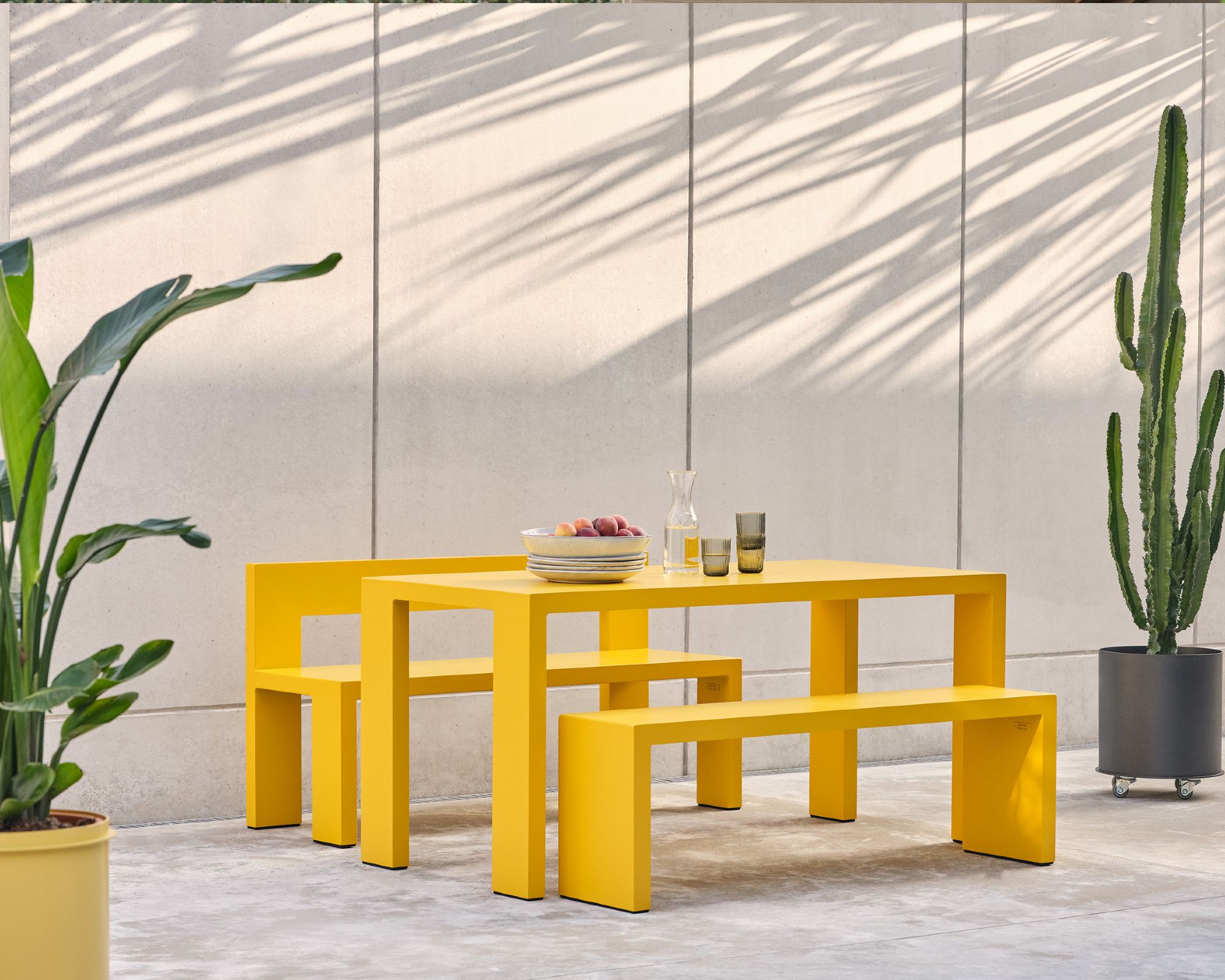
The Linear aluminium all-welded outdoor dining collection from Jennifer Newman
Rattan: is rattan garden furniture weatherproof?
Rattan garden furniture is perhaps the most quintessential summer look for the garden. The open weave design, usually in soothing natural tones, creates a relaxed and laidback look whatever the style of your outside space.
But, how durable is rattan garden furniture, and can you leave it outside all year round?
Natural rattan furniture is an organic material made from fast-growing tropical plants which are woven together to form the distinctive 'rattan' structure. Because these plants are so fast-growing it's generally considered a sustainable option too. However, natural rattan can dry out and become brittle in sunlight, and exposure to rain will lead to mildew and rot, so although a rattan chair is a lovely option to sit out in on a warm summers day, you will need to bring it back indoors overnight to protect it from exposure to moisture.
What we now generally consider as 'rattan' garden furniture is actually a plastic polymer - commonly dubbed PE-rattan or polyrattan - which is not a natural material but a man-made synthetic plastic designed to imitate the rattan look we love.
Polyrattan is far more durable outdoors than natural rattan, and has a wide range of benefits, as Tim Pennell of Bramblecrest garden furniture explains:
'Woven synthetic rattan is a lightweight, extremely durable material that is UV and frost-resistant. Rattan furniture requires minimal maintenance and if crafted over an aluminium frame it is lightweight and easy to move.'
Tim Pennell, Bramblecrest
However, you will often find a lot of differing advice from manufacturers on whether their rattan garden furniture can be left outside all year round.
The main reason for these discrepancies isn't the polyrattan itself - which is generally low maintenance, waterproof and frost-resistant - but in the differences in the metal frames that the polyrattan is woven around.
A cheaper steel frame that's uncoated will soon rust under exposure to the elements, whereas powder-coated steel has an additional barrier to protect it, and a rust-resistant aluminium frame is likely to weather extremely well outdoors.
You'll generally see the differences in the frame's base metal reflected in the price, with longer-lasting aluminium frames the more expensive. So if you're looking for the most durable outdoor furniture, it's important not to just be swayed by price; make sure to read the small print and find out exactly what your rattan garden furniture is made of before you buy.
You can find both affordable and investment designs in our guide to the best rattan garden furniture.
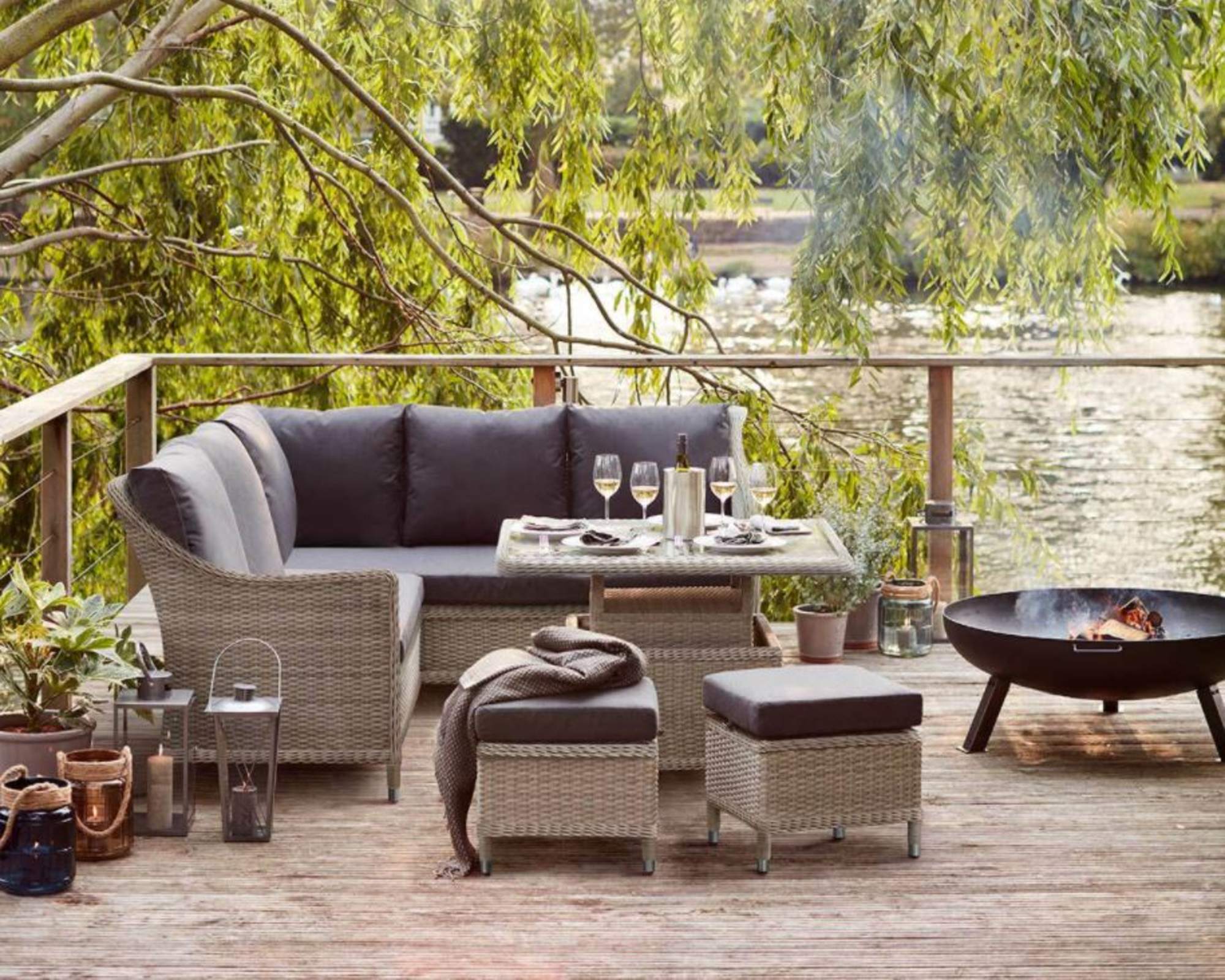
A synthetic rattan garden furniture set from Bramblecrest with an aluminium frame
What is the most durable outdoor furniture?
In conclusion, the most durable outdoor furniture is likely to mean hardwoods, like teak, acacia or eucalyptus if you choose to invest in wooden garden furniture, or rust-resistant aluminium if you opt for metal garden furniture or outdoor furniture with a metal base frame.
All of these options are likely to be more expensive than their cheaper yet less durable counterparts, however as Heal's Hannah Armstrong says;
'Just as with any indoor piece, you should expect wear and tear over time, especially when your set is exposed to the forces of the unpredictable British weather. However, if you choose to invest in high-quality materials and look after your furniture, you’ll reap the rewards long term.'
Hannah Armstrong, Heal's
Of course for the ultimate longevity and peace of mind, you still can't beat storing your outdoor furniture under cover during the worst of the elements, in which case looking for options that can stack, fold or offer space-saving design can be key.
And if you want to leave your outdoor furniture in situ over winter, then you may still want to consider a protective cover to keep off the worst of the rain and snow so that moisture isn't sitting on your garden furniture for long periods of time.
We've rounded up some useful options in our guide to the best outdoor furniture covers to help you get started.
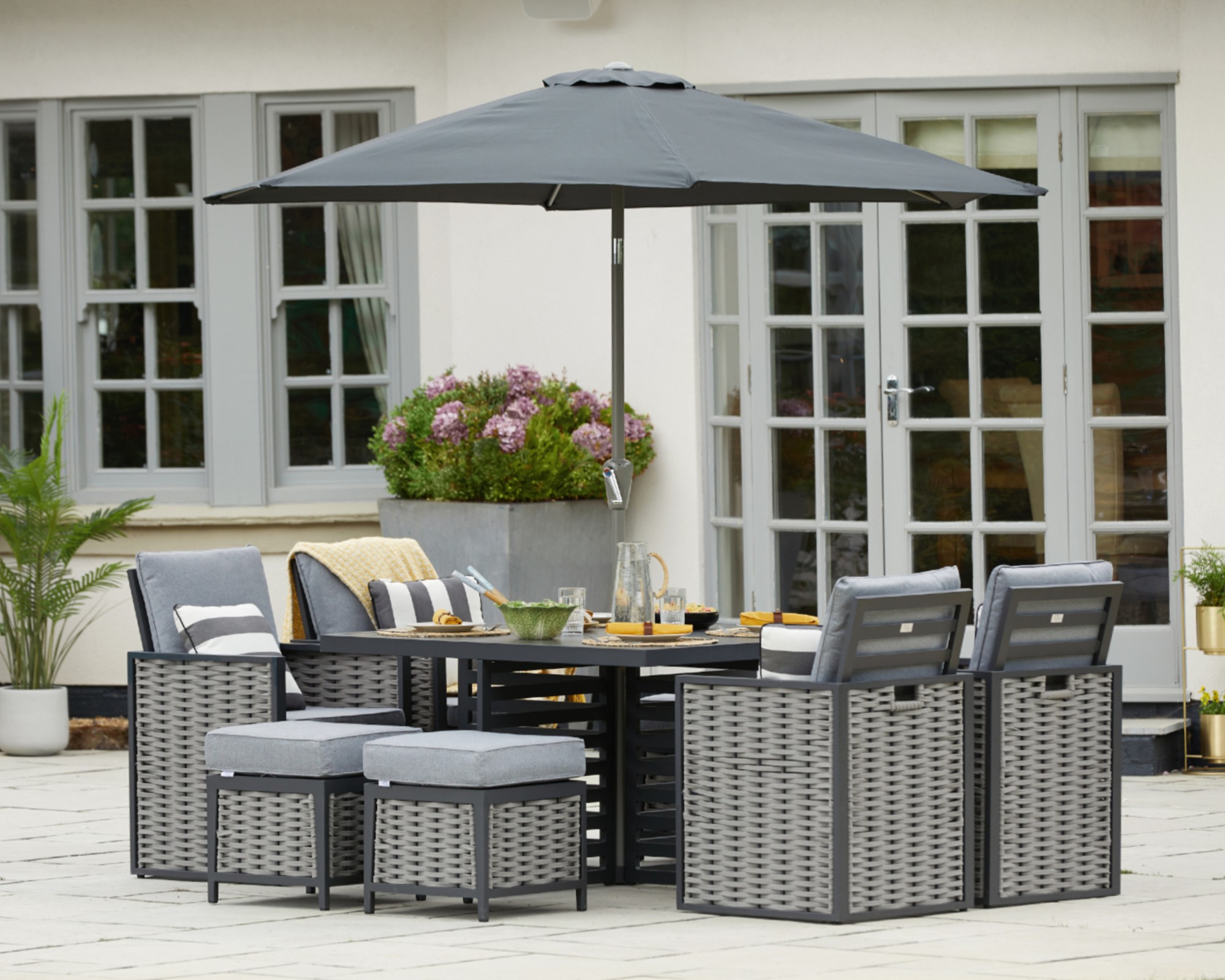
The Talia Cubo from Moda, an eight-seater dining set made from polyrattan with an aluminium frame
Who makes good garden furniture?
So, now that you know what you're looking for, it's time to find the outdoor furniture that will complete your outside space.
For the best in-stock garden furniture - particularly important this year when we've seen outdoor furniture flying out of stock in record time! - you'll find our round-up of Gardeningetc's go-to retailers in our where to buy garden furniture edit.

After specialising in Textile Design for Interiors at Winchester School of Art, Amy spent many years working in the design and interior industries, including styling and visual merchandising for many well-known brands. She now writes for multiple interior publications, including Livingetc, Homes & Gardens, Ideal Home, and Real Homes to offer advice on creating a well-designed interior, whether that's choosing the perfect shade of paint, what to look for when investing in a new sofa, or sourcing on-trend and sustainable products for the home.
Amy joined the Gardeningetc team to bring her design knowledge outdoors, offering advice on what to consider when shopping for the best garden furniture, how to choose the ideal garden bench, and sourcing everything you need to create an outdoor living area that will become the perfect place to kick back and relax when the sun shines.
